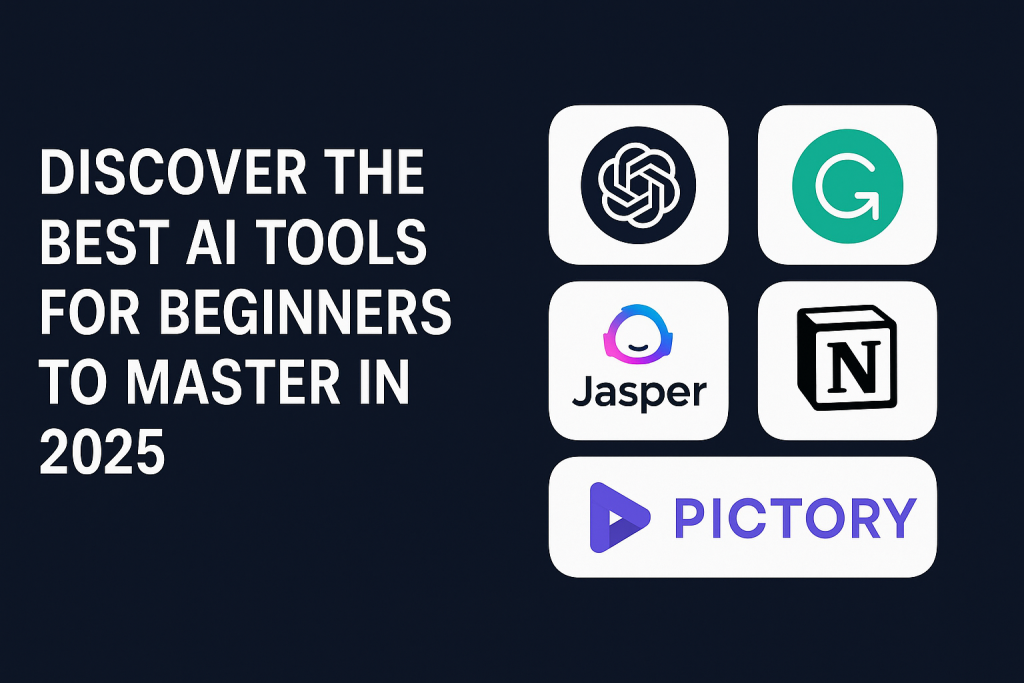
In the past couple of years, AI has grown to become an indispensable part of life, playing a significant role in transforming the way we do business, healthcare, education, and marketing among others. This trend is actually even more accelerated in 2025. Thankfully, you don’t have to be a developer or data scientist to leverage AI. These days, the best AI tools for beginners are easier to use, less expensive, and more powerful than ever.
In this post, I’ll look at the best AI tools for beginners in 2025, from writing and image generation apps to productivity apps, education and more. We’ll step through how the tools work, how to get started using them, and why they’re a good fit for beginners.
Whether you’re a student, business owner, writer, or just a fan of AI, this guide is for you.
What Are AI Tools for Beginners?
AI tools for beginners are programs which enable individuals who are not experts in AI to leverage the technology without having to code or train complicated models. Such tools sometimes employ natural language process (NLP), machine learning (ML), and automation to help with your writing, editing, image creation, data analysis, customer support, and so on.
Standard features of AI beginner tools:
- Easy-to-use (eg drag-and-drop or chatbot interfaces)
- Pre-trained models and templates
- Cloud-based access (no downloads needed)
- Tutorials and help docs
- Affordable pricing tiers
Popular categories include:
- AI writing assistants
- AI design tools
- AI chatbots
- AI data analysis tools
- AI video creators
As these tools don’t need any technical knowledge, they are perfect for beginners who want to accelerate and test productivity and creativity with AI.
Why Should You Use AI Tools as a Beginner?

Here’s the reason for this rise in people or individual turning toward the AI tools for beginner in 2025:
✨ Benefits:
- Time-saving: Automate repetitive tasks
- Inspiration: Come up with new ideas, content or designs
- Accessibility: Build with no code. DEFINE YOUR SITE PURPOSE Define your website’s purpose, growth goals, and call of action to the target audience.
- Productivity: Streamline workflows and communication
- Cost: Free and Low-cost plans available with most tools
Just imagine training a blog post with the ability to spew out images to promote it, or summarize a new research report, or even produce a chatbot from Facebook data without ever being presented samples of bot conversations. That’s the promise of today’s AI tools for beginners.
Whether it’s for a résumé, social media posts or a new business, the appropriate tool can save hours of work and make you rise above the competition.
What to Look for in AI Tools
When choosing the best AI tools for beginners, you’ll want to look for the following features:
1) User Interface
Opt for clean and minimal interface on your tools. For beginners, drag-and-drop editors, chat prompts and tooltips are useful.
2) Customization
Seek out tools you can tailor to tone, style, output format or goals — even if you’re not tech savvy.
3) Learning Curve
Choose platforms with strong tutorials, demos and customer support.
4) Integration
Opt for tools that work with apps you’re already using (like Google Docs, WordPress, Canva, Slack).
5) Output Quality
Try out the performance of the tool. Some beginner-friendly AI tools can overpromise and underdeliver.
6) Scalability
Even if you’re a beginner now, this tool should still be helpful once you grow your skills.
Top 10 AI Tools for Beginners in 2025
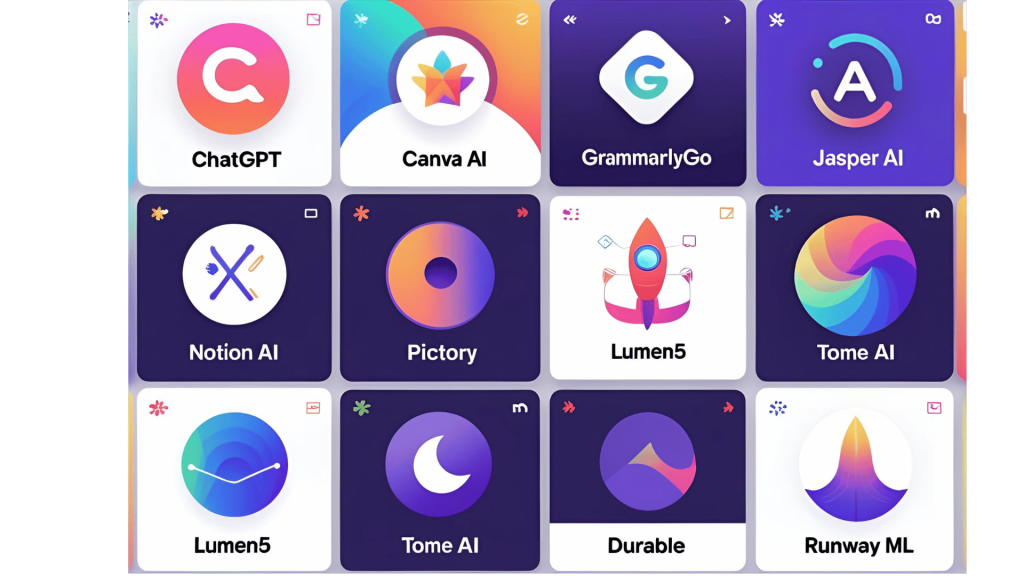
Continuing the Beginners Series with our countdown of the Top 10 AI Tools in 2025.
Here are the best AI tools for beginners and new users according to ease of use, performance, availability, and price.
1. ChatGPT by OpenAI
What It Does:
An intelligent chatbot to help you write, code, and brainstorm.
Why It’s Great for Beginners:
Simple chat interface
Natural conversation flow
Available on web and mobile
Use Cases:
Writing emails, essays, blog posts
Learning new skills
Brainstorming ideas
2. Canva AI (Magic Write | Magic Design)
What It Does:
An all in one graphic design platform now with new design, writing and image generation AI tools.
Why It’s Great for Beginners:
Drag-and-drop editing
Pre-made templates
Integrated AI writing and designing functionality
Use Cases:
Social media graphics
Posters, resumes, business cards
Quick content creation
3. GrammarlyGO
What It Does:
AI writing assistant that helps with grammar, clarity, and tone.
Why It’s Great for Beginners:
Real-time writing feedback
Suggests improvements and rewrites
Supports multiple writing tones
Use Cases:
Emails, essays, business writing
Content polishing
4. Jasper AI
What It Does:
A content-generation app that helps beginners write blog posts, ads and email copy using prompts.
Why It’s Great for Beginners:
Pre-built content templates
Easy-to-use editor
Supports brand voice settings
Use Cases:
Marketing copy
SEO articles
Product descriptions
5. Notion AI
What It Does:
Augments the Notion productivity platform with AI that summarizes, writes and encourages idea generation.
Why It’s Great for Beginners:
AI operates directly in your notes
Simple interface with explainers
Great for students and teams
Use Cases:
Note-taking
Project planning
Document writing
6. Pictory AI
What It Does:
SoundItOut Automatically transforms text into slick looking videos with voiceovers, stock imagery and more.
Why It’s Great for Beginners:
No editing skills required
Auto-captioning and narration
Great for repurposing content
Use Cases:
YouTube videos
Social media reels
Training materials
7. Lumen5
What It Does:
Turns blog posts into videos with AI and design templates.
Why It’s Great for Beginners:
Intuitive slide-based builder
Automatic text-to-video
No editing experience needed
Use Cases:
Content repurposing
Corporate presentations
Social video creation
8. Tome AI
What It Does:
A presentation helper with AI so it actually helps create visual decks, story-driven decks.
Why It’s Great for Beginners:
Smart layout suggestions
Prompt-based story creation
PDF export and embedding options
Use Cases:
Pitch decks
Product demos
Classroom presentations
9. Durable AI Website Builder
What It Does:
Builds entire websites from one prompt – no code necessary.
Why It’s Great for Beginners:
Launch in minutes
Built-in text and image generation
Custom domain & hosting included
Use Cases:
Personal sites
Landing pages
Freelancer portfolios
10. Runway ML (Gen-2)
What It Does:
Turns text into videos, images and animations with generative AI.
Why It’s Great for Beginners:
Intuitive tools for creatives
High-quality visual output
Drag-and-drop video editor
Use Cases:
AI-generated short films
Visual content for marketing
Creative experiments
Selecting an AI Tool
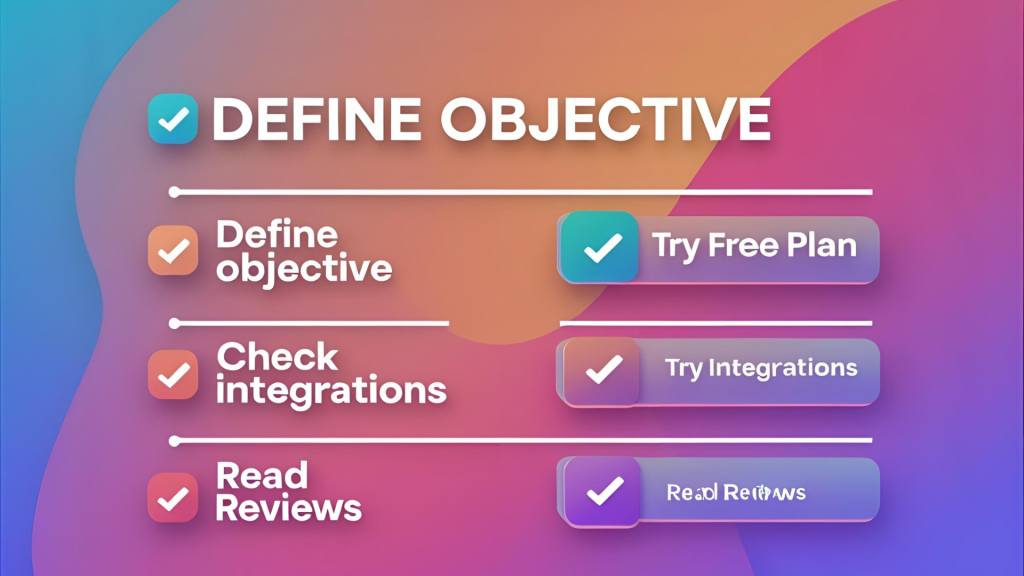
Cesspool of language There are so many beginner AI tools available that it is difficult to choose the right one. Here’s a step-by-step process to guide you in assessing and choosing the right tool for your goals, tastes and skills.
🎯 Define Your Objective
Ask yourself:
Do you wish to write content more quickly?
Do you have a website or are you blogging?
Need design assistance and/or video production?
There can be a variety of AI tools for beginners based on each goal. For writing, ChatGPT is great, while when it comes to design, Canva is one heck of a hero.
🧪 Try Before You Buy
What beginners AI tools commonly provide:
Free trials
Freemium plans
Demo templates
Use these perks to see what features and interfaces and what not.
🧰 Evaluate the User Experience
Look for:
Easy navigation
Tooltips or beginner guides
Prompt suggestions
There needs to be a simple, clean dashboard for beginners. Jasper and Durable are great tools for this.
🔗 Check Integration Options
Need to hook AI tools up to Google Docs, WordPress, Shopify, or Slack? Ensure that the tool you select has applicable integrations.
💬 Comments & Reviews – Join the Discussion!
Look for YouTube walkthroughs, Reddit discussions and Trustpilot reviews to see how others similarly new to the tool are using it.
🧾 Budget Considerations
A few AI tools for beginners are priced at $10/month or less, and other tools can cost hundreds. Begin with the free versions and add-ons and move up when required.
Real-Life Examples and Use Cases
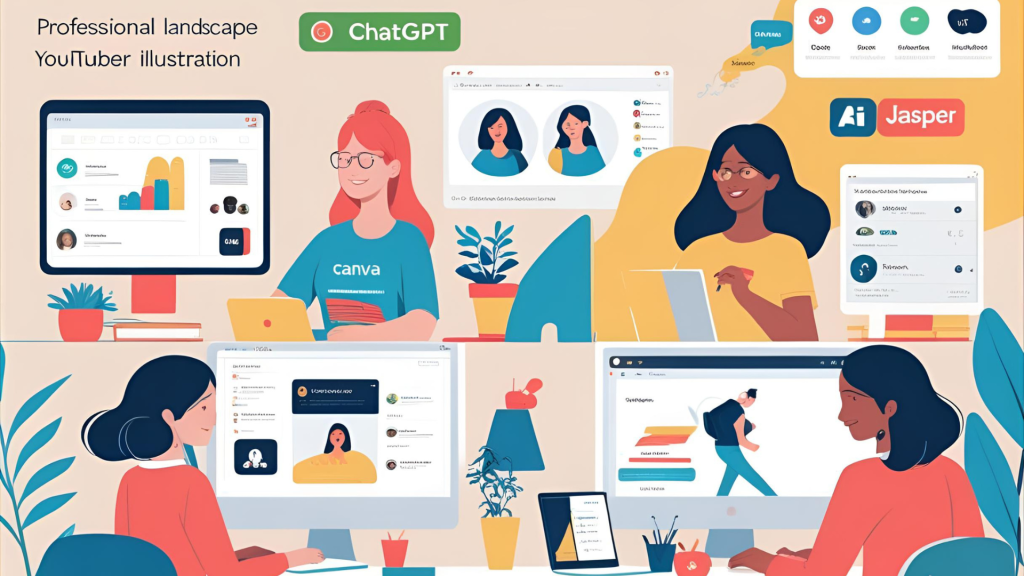
Below examples show how new users in different industries have been able to use tools of AI for beginners to succeed.
1. Student Writing Essays with ChatGPT
A college student writes essay outlines, comes up with topics and receives grammar recommendations using ChatGPT. Since the second list can be extracted and indexed by Adwords software this will save time and improve the quality of submissions.”
2. Freelancer Hand Picking Send Portfolio (Set) with Resilient AI
Durable AI allows a non-coder 廣傑 hiring a Freelancer to make a website in ten minutes to display past work and advertise services.
3. YouTuber Producing Videos Using Pictory
A novice YouTuber turns blog content into bite-size voice-narrated videos with stock footage with Pictory — and no editing skills are required.
4. Tiny Firms Making Ads Using Jasper AI
A small business owner writes their Facebook ads, Google descriptions, and email campaigns in their brand voice using Jasper.
5. Brand and looking for creatives to be designed for ecommerce space in Canva.
An onine store manager utilizes Canva’s AI technology to produce product graphics, Instagram posts and holiday promotions quickly from brand templates.
6. Teacher presenting with Tome AI
With Tome, a teacher constructs lesson slides by transforming text prompts into visuals. Students love the interactive format and I save hours of preparation!
7. Nonprofit Researcher – Summarizing Documents with Notion AI
A nonprofit staffer uploads PDFs and Notion AI summaries research, pulls out key stats and crafts reports — saving them 50% of their reading time.
All this evidence suggests that AI tools for beginners are not just fashionable — they’re practical, time-saving and transformative.
Advice for How to Try AI Tools
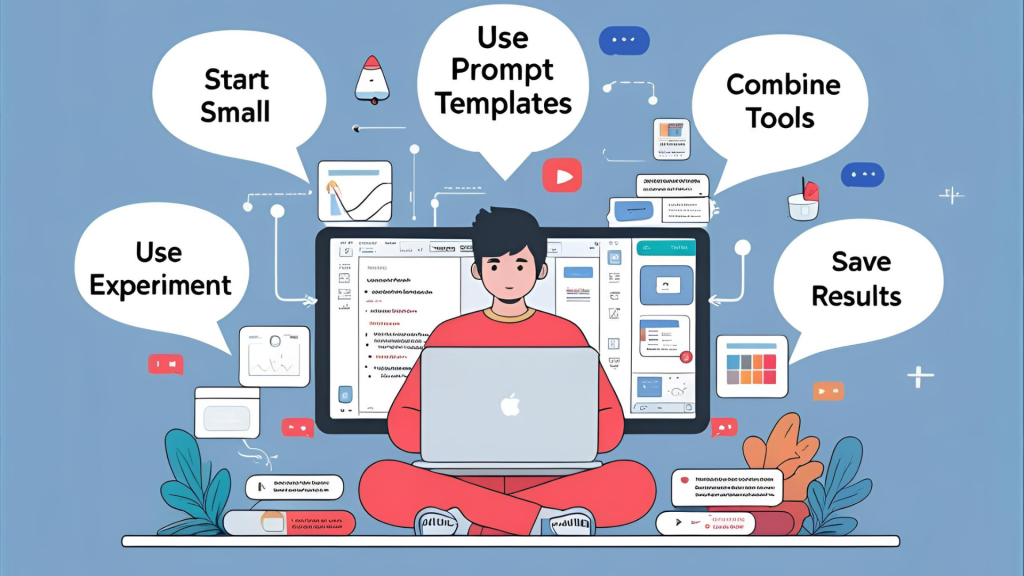
Getting into AI may seem daunting, but it doesn’t have to be. Follow these beginner-friendly guidelines to fully leverage a handful of your favorite AI tools for beginners:
1. Start with One Tool
Don’t overwhelm yourself. Choose one tool that suits your immediate need — for example, writing with a ChatGPT or creating with Canva’s AI.
2. Use Prompt Libraries
Many frameworks provide out-of-the-box examples, libraries or templates for that. Start off with these to understand how to get reliable results from your AI tool.
3. Practice Iterative Prompts
If the first output isn’t perfect, adjust your prompt. For instance:
“Send a formal email” → “Send a casual follow-up email about an invoice delay.”
4. Combine Tools for Better Results
Pair ChatGPT (for content) and Canva (for design), or Notion (for notes) and Jasper (for blogs). AI tools for newbies are even better in teams.
5. Save Output for Reuse
Don’t reinvent the wheel every single time. Save your prompts, replies, and templates to develop your own mini AI library.
6. Stay Updated
Keep track of AI news, newsletters, and changelogs for your tools. Tools change quickly — if you want to be able to use a tool’s features to the max, you should also keep up.
7. Mind the Limitations
AI isn’t perfect. Always verify facts, spelling, or formatting before publishing anything that is generated from an AI tool.
Next Steps in AI Tools for Beginners

AI development is happening at a torrid pace. Here’s what the immediate future holds for AI tools for beginners:
🤖 More Personalization
AI technologies will soon know your style, preferences and objectives. Look for custom tailored writing colors, personal dashboards, and maybe even voice control.
📱 Mobile-First Interfaces
Mobile AI apps are already getting better. Five years from now, novices will be able to develop, write or produce videos all from their phones.
💼 Integration with Popular Platforms
AI code will become deeply integrated with tools such as Microsoft Office, Zoom, Shopify and many more — to provide more of a “zero learning curve” for those who are new to these workflows.
🧩 Modular AI Components
Novices will mash little tools — big ones that fiddle with tone, and others that play the Make It 3X trick on your work — in the same ecosystem.
🧑🏫 Beginner-Focused Training
Look for more “AI 101” courses, certifications and in-app coaching. As demand increases, so will support for beginners.
Industry-Specific AI Tools for Beginners
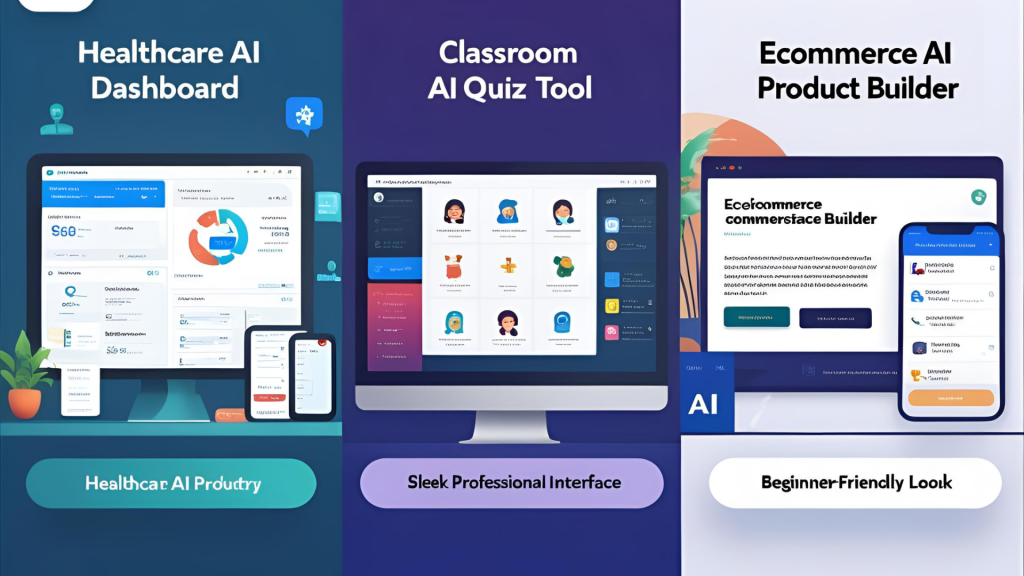
While general-purpose AI tools that everyone can enjoy such as ChatGPT or Canva offer great value, some tools are specialized for use in particular industries to allow beginners to instantly excel in niche skills without having to be a very technically-skilled person.
📦 AI Tools for Beginners in Healthcare
Glass Health: AI-powered recommendations for drafting clinical notes, creating a diagnostic plan, and understanding symptoms for doctors and medical students.
Infermedica: AI-driven Symptom Checker Which Provides Medical Triage And Patient Intake -Best For Small Clinics or Solo Practitioners
Why it’s beginner-friendly: Clean UI, output based on evidence, and beginner guide for clinicians.
📚 AI Tools for Teachers & Students
Khanmigo (Khan Academy AI assistant): Guides students through math, coding and writing problems by responding to natural language prompts.
Quizizz AI: Allows teachers to auto-generate quizzes and tests around curriculum topics.
Why it’s newbie-friendly: Active learning, gamified tools, and a student-centric UX.
🛍️ AI Tools for Ecommerce Greenhorns
Shopify Magic: Automatically writes product descriptions, marketing text, etc directly in the Shopify dashboard.
Description: AI powered video and audio editing for product tutorials and marketing reels.
Why it’s great for beginners: Templates, voice-over generators and preview on the fly.
💼 Automated HR AI tools for the corporate jungle!
Textio: An augmented writing tool that helps you to create more inclusive job descriptions and internal HR communications table stakes.
HireVue: Employs AI to screen candidates, schedule interviews and analyze applicant responses.
Why it’s great for beginners: It’s built for ease of use with drag-and-drop scheduling, HR templates and candidate scoring.
Most Undervalued AI Tools for Beginners You Need To Know
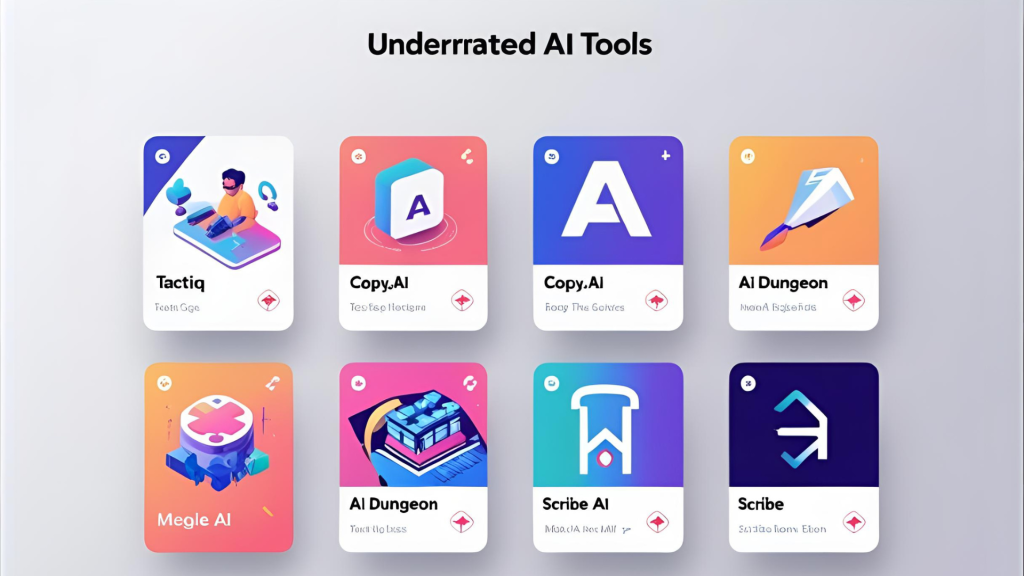
As the top 10 AI tools steal all the limelight, there are some lesser-known tools that beginners act as the unsung heroes in 2025.
Tactiq
What it is: Records live meeting transcriptions from Zoom, Google Meet and Microsoft Teams.
Why it’s great for beginners: Immediately record meeting notes, making it the easiest way to follow up with summaries, timestamps and keywords.
Copy.ai
What it is: A tool to aid with digital ad copy, social media captions, product descriptions and other types of writing.
Why it’s great for beginners: Following prompts to copywrite and self strategy based tone selection.
AI Dungeon
What it is: A text-based game that is creative writing with an A.I., where users collaboratively write stories.
Why it’s good for beginners: A fun introduction to creative writing and A.I. storytelling.
Scribe AI
What it is: A screen recording that makes your repetitive tasks into step by step SOPs.
Why it’s good for newbies: Doesn’t require tech skills to produce training documentation.
The Workflows of AI Tools: How Beginners Combine Different Tools
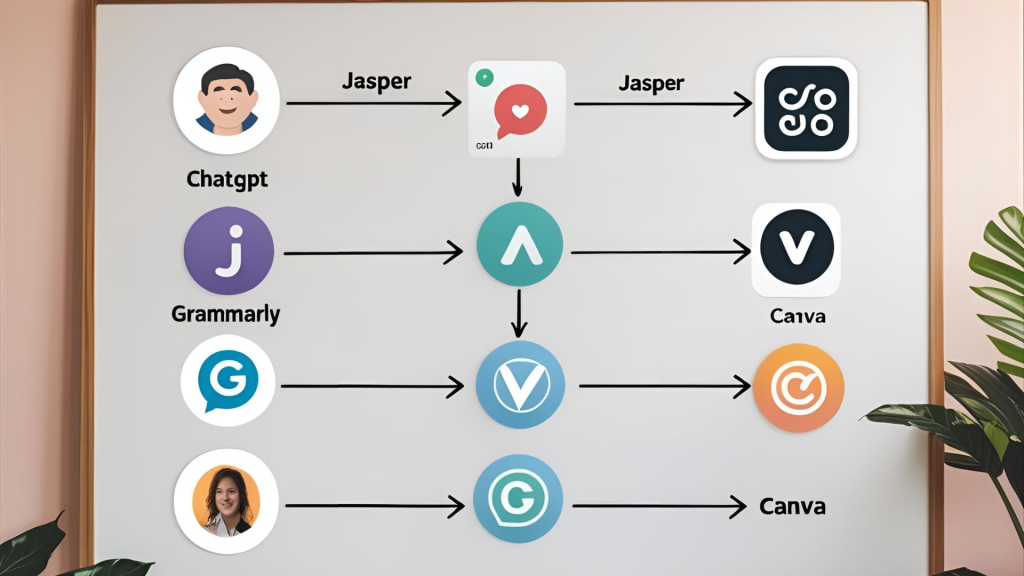
To make the most of AI tools for the novice, many users combine two or more tools into a sort of ‘smart’ workflow. Here are beginner-friendly examples:
Scenario, example 1: Content creation
ChatGPT → Drafts your blog post outline
Jasper AI → It expands into stand alone post
GrammarlyGO → Aids with grammar and style Check jarables → Corrects grammar and tone
Canva → Designs blog visuals
Example 2: Video Marketing
ChatGPT → Writes video script
Pictory or Lumen5 → Turns your script into a video
Descript → Voiced and edited by me
Example 3: Build a Website
ChatGPT → Generates website content
Persistent AI → Construct the entire site using that information
Canva → Designs the logo and images
Let’s look at what AI for beginners combined together in these basic workflows can achieve — regardless of experience.
Bonus Aid to Get You Started to Learn More About AI Tools for Beginners
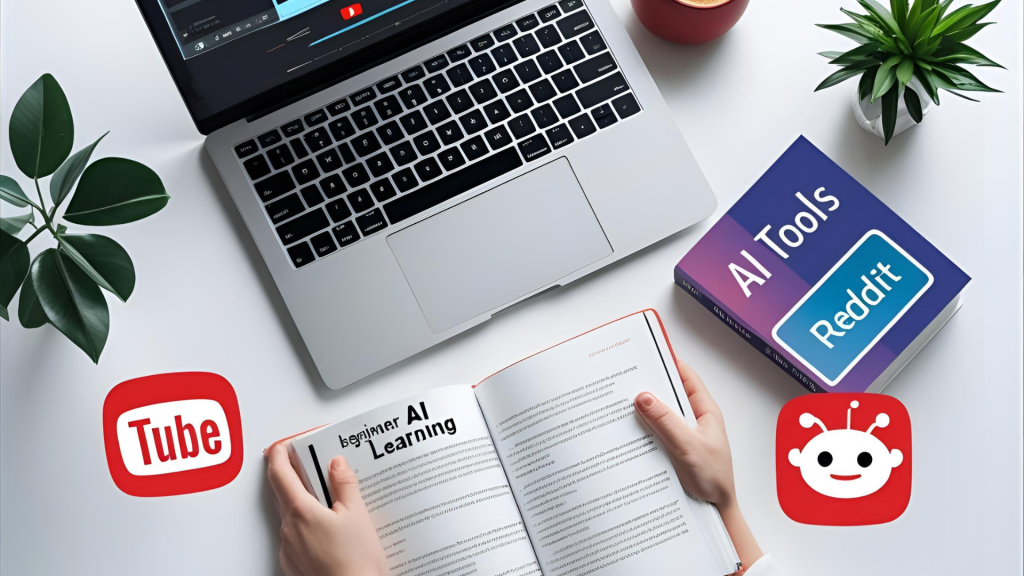
For those who want to dig even deeper, here are free and paid resources that take the newbie from understanding to mastering AI tools:
YouTube Channels:
Future Tools with Matt Wolfe
Tech With Tim
AI Explained
Courses:
LinkedIn Learning: Generative AI First Look
Coursera: Prompt Engineering for Beginners
Udemy: AI Productivity Tools
Communities:
r/ArtificialIntelligence on Reddit
Future Tools Discord
Product Hunt AI Collection
Newsletters:
The Rundown AI
Ben’s Bites
Prompt Daily
There is no shortage of beginner-friendly insights and software walkthroughs on these platforms.
🚀 Final Thought – Use the Beginner’s Advantage
The world of A.I. can seem daunting — but the reality is, there has never been a better time to be a novice. You now have the tools for engineers and coders made available to you.
Whether you are an educator, an individual starting to build your brand, or the student who is working on their essays — beginners AI tools are a gateway to accelerate, inspire and innovate.
👉 So go ahead. Test that free plan. Try that first prompt. Design that first video. AI is your tool kit, not just the future.
